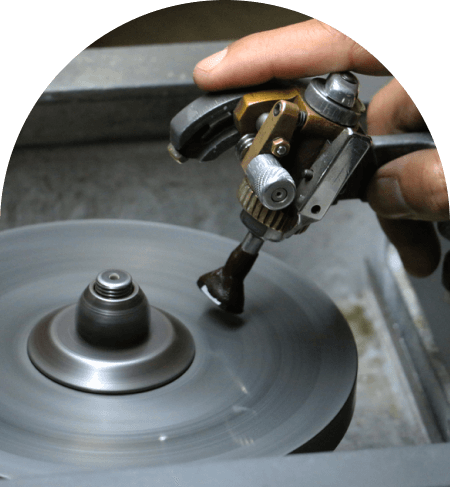Close

Our close relationships with the world's premier lab grown rough diamond manufacturing companies enable us to assure our clients a regular and unrivaled supply of polished diamonds well into the future. Rough diamonds are sourced from all around the world. Processing of diamonds according to well-defined quality control criteria leading to classification and grading of the polished diamonds by our expert staff.
As a result of our very extensive and diversified procurement capacity, we have built up great insight and knowledge of goods of different origin and quality, as well as assorting and pricing. This department deals with the assortment of rough diamond based on final results (Polished Outcome) of rough diamond. The results include color, clarity, size, cut etc. In this departmen the rough diamonds are assorted in to small packets based on the results by our experts. By creating these specialist assortments and placing goods to niche players we generate significant added value for the rough goods. After rough assortment the diamonds are ready for the planning and marking department.


Diamond Planning and Marking is considered as the heart of manufacturing process. Rough stones are planned and marked as per the shape and size of rough, inclusion's position, density and current market situation of various shapes. Rough stones are planned and marked as per the shape and size of rough, inclusion's position, density and current market situation of various shapes. This is the department which finalizes the actual shape, size, weight, clarity of the diamond. We have many advanced planning machinery which is used to mark the diamond. The lesser the inclusions, the clearer, brilliant and expensive the diamond will be. Quality is determined by how clean the diamond is inside. The positioning of the inclusions within the diamond influences its value, as some inclusions may be polished out during the manufacturing process.
Cleaving and sawing are simple processes by which a diamond can be divided into 2 pieces. Now in diamond there are different planes on the basis a diamond that is marked can either be cleaved or sawn. If the planner's decision is to the stone, it then goes to the cleaver. Large diamonds are often preshaped by cleaving into pieces suitable for sawing. When the stone is very large and valuable, the cleaving is a most critical process, because a mistake by the planner or the cleaver can shatter the stone. If the marking is perpendicular or against the planes then the diamond needs to be sawn i.e. ‘cut’. Sawing process in the recent times has advanced a lot as far as technology is concerned. At present diamond are sawn through laser machines.


Once the process of Cleaving / Sawing is completed the craft diamonds is sent back to the planning and marking department for checking the results of procedures and then passed on to the next process of Boiling.
Boiling is one method of cleaning diamonds. The rough diamonds which are processed under laser system are needed to clean. Diamonds must be checked at every stage of manufacturing and sorting to determine what defects remain. Here crafts are washed in sulfuric and nitric acid. After boiling process the diamonds are passed on to next process of lotting.


The term “lotting” is the technical word in diamond industries. “Lotting” means preparing small packets of diamonds based on size. The main function of this department is to allot the diamonds to the factories. Here diamonds are allotted to the various factories based on the size.
Bruting is the process of giving shape to the rough diamond. Bruting process includes rough blocking, top blocking, bottom blocking. Bruting is the process whereby two diamonds are set onto spinning axles turning in opposite directions, which are then set to grind against each other to shape each diamond into a round shape. The main function of this process is to give a shape to the rough diamond in such a way that its optimum effect can be achieved by the polisher, without extra weight loss than required. In this process all kinds of internal imperfections formed before or after crystallization of a diamond are removed through blocking.


Polishing is the final step in diamond cutting. Polishing means the process of giving the diamond its final look. Ideally, a diamond should be free of any visible polish lines, burn marks, scratches or abrasions under 10 x magnifications. The smoother the polish, the more beautiful and brilliant the diamond will appear. Surface facets of a poorly polished diamond appear blurred or are dull in their sparkle. This process includes three steps top, bottom, and table. This is the last step in the manufacturing process of the diamond from where on it goes to the grading department.